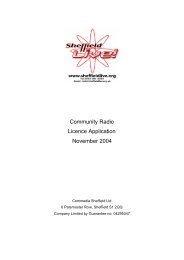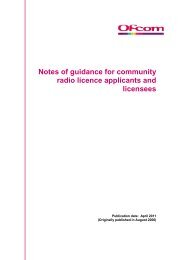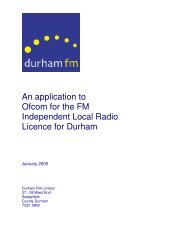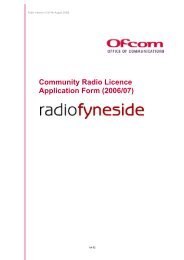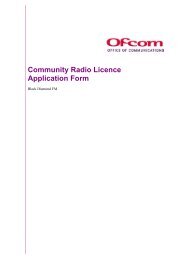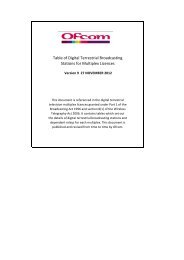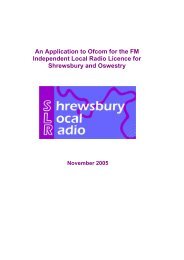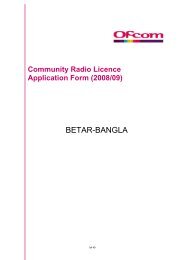UHF2 realignment study - Ofcom Licensing
UHF2 realignment study - Ofcom Licensing
UHF2 realignment study - Ofcom Licensing
Create successful ePaper yourself
Turn your PDF publications into a flip-book with our unique Google optimized e-Paper software.
Another challenge comes from determining which costs should be included in the analysis.<br />
This is often controversial as organisations or interest groups may have considerable<br />
debates on which costs should be included or excluded from a <strong>study</strong>.<br />
ii. Defining Costs<br />
It is important when conducting and reviewing cost-benefit studies to be aware of the way<br />
that economists define costs. The true cost of something is what you give up to get it. In<br />
terms of spectrum band alignment, costs are not only the resources needed to effect the<br />
alignment but also the benefits that were forgone as a result of the decision to re-align the<br />
band. These ‘opportunity costs’ are relevant for cost-benefit analysis.<br />
In assessing which costs to include in the analysis, the key is to consider only the costs that<br />
will vary as a result of the decision to align the band.<br />
7.3 Methodology for measuring the costs and benefits of Band Alignment<br />
We will use the following approach to estimate the costs and benefits of band alignment:<br />
240689 - 450-470 Study Final Print<br />
Version (Dec08).doc<br />
Firstly, we will review previous studies on the costs and benefits of band<br />
alignment – and summarise the results. Given primary level research is<br />
beyond the scope of this project, we will rely heavily on the research that has<br />
already been carried out on the costs and benefits of band alignment.<br />
Previous research and analysis will be critically assessed, taking into account<br />
any modifications needed given recent policy and market changes.<br />
Secondly, we will outline the major options for band alignment. We will outline<br />
the assumptions made in respect of the future use of the band. In particular,<br />
how the spectrum is used once the band is aligned will have a key impact on<br />
the results (for instance, the value of the spectrum that may be available for<br />
re-allocation as a result of greater spectrum efficiency). Our assumptions on<br />
the future use of the band are critical for the analysis. We will do this based<br />
on providing three broad options for band alignment, which are discussed in<br />
more detail in Chapter 8.<br />
Thirdly, we will identify and discuss each of the high-level costs and benefits<br />
that may accrue for each of the options. These will be based on relevant<br />
previous work as well as our own analysis, assessments and assumptions.<br />
Fourthly, we will review the three options in more detail and identify for each<br />
option the detailed factors to be taken into account and measured in Net<br />
Present Value (NPV) terms, based on a 15-year assessment period. Again,<br />
we will draw on previous analysis of the costs and benefits of band alignment.<br />
These will be assessed in light of the recent policy and market changes. We<br />
will also carry out a sensitivity analysis to review how sensitive the results are<br />
Page 62<br />
abc





